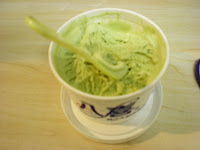Asia--pretty much the world’s center for funny-looking leaves swirling about in cups of hot water. As a not-so-native Indian, I’ve had chai flowing through my veins ever since I was old enough to drink it. (And before! My grandfather was known to drink sixteen cups a day. Small cups, but still.) When I visited Bombay last December, I was reminded of an oft made observation—the country runs on tea. It is consumed throughout the year and around the nation. You can find it at a humble drink stand or at a seven-star hotel—yes, they have those there. And, if you entered the home of any Indian family (especially in Goa) and they didn’t offer you some, I’d be very, very surprised. An observation I didn’t make until many years after moving to the States: for all their consumption of the stuff, Indians seem to only have one national version of tea. For example, if you are offered tea by an obliging host, the conversation goes something like this:
“Would you like some tea?”
“Yes, thank you.”
And that’s it. Okay, that seems ordinary and polite enough, but contrast it with an exchange that might occur, say, in my apartment:
“Would you like some tea?”
“Yes, thank you.”
“Okay, what kind would you like?”
“Well, what kinds do you have?”
“Um, you’d better come and see.”
And so follow several minutes of conversation on herbal, spiced, and green versions of my favorite caffeinated beverage while the water heats up. In India, people seem to know exactly what kind of tea. And, what’s all the more surprising is that, baring great differences in quality and preparation, the tea you sip in your aunt’s living room is going to taste the same as the tea you’re doing your best not to spill in the sleeper car of the train to Mangalore. It’s amazing. Or, at least it is to the unrefined and chai-thirsty palate of someone like me. I’ve said it before and I’ll say it again: they just don’t make chai in the US like they do in India. It’s either the wrong amount of cardamom or the inexplicable presence of nutmeg, but I haven’t found an American take on chai that’s quite my blood type. (Don’t get me started on those “chai lattes” at Starbucks!)
But, while my hopes for a chai transfusion might be sparse in the US, the country does have so much to offer in the world of tea—variety being number one on the list. There’s nothing like drinking a foreign tea in its native country, but trying new teas is always an adventure. I’ve learned that there are so very many types of tea, with different tastes, and for different moods, and I’m eager to discover more. In fact, I’m convinced there is a tea for every mood and almost every occasion. A bold statement, you might be thinking. Well, you haven’t had much time to consider it. Why don’t you let it steep for a while? I’ll go put the kettle on.












